25 November 2019
Coat of Arms and Emblems of Québec City

The coat of arms, flag and seals fulfill an important symbolic and political function. Carefully designed, these visuals ensure the official representation of a country, state, province or city. They are generally intended for use during formal ceremonies, official proclamations, awards and honours, and citations for personal or professional excellence. The coat of arms also figures on the badge of various departments, and the flag accounts for all bunting needs. In this article, we will revisit the history and symbolic significance of heraldry in the symbols of Québec City.
The First Coat of Arms of Québec City
The first coat of arms of Québec City is described as such: “Gules a leopard crowned holding in the dexter paw a key Or with a riveted bordure Or.” The riveted bordure is not always present. The motto reads Natura Fortis Industria Crescit, which means “strong nature prospers by work.” In some versions, the escutcheon is supported by two angels and surmounted by the French crown.
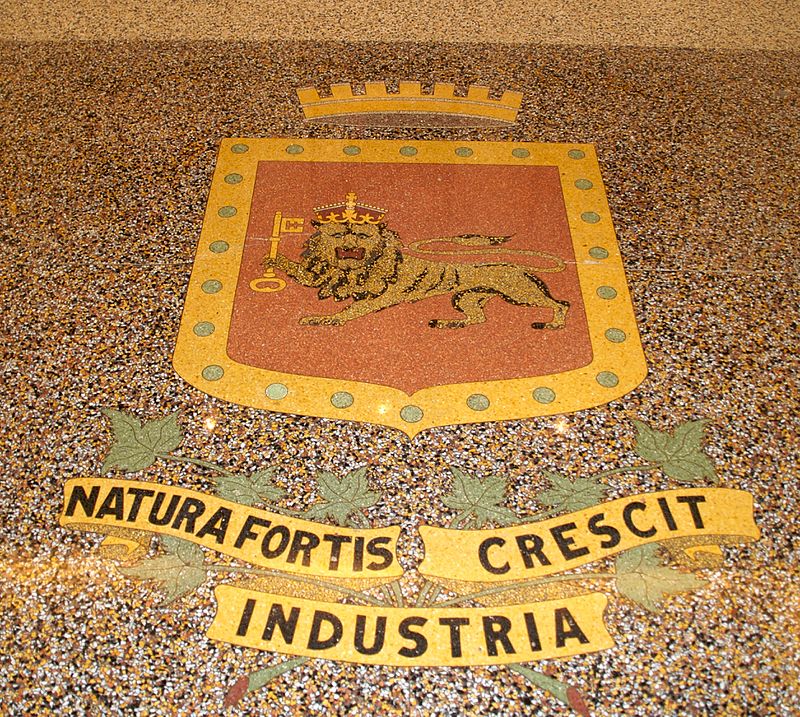
The exact moment at which this coat of arms has been created is unknown, but the arms resemble the lower part of those granted to the Anglican diocese of Québec by British King George III in 1793. It is quite plausible to suggest that they also date from the end of the 18th century.
Québec City was incorporated in 1833 and held its first elections in April of the same year. One of the first decisions of the city council was to give the city its first official seal. City counsellor Joseph Légaré, a famous Québec City painter at the time, designed the first seal of the city. Particularly dense in composition, the illustration depicts a female allegorical figure that, like a goddess, holds a horn of plenty and a shield bearing the city’s coat of arms. At its side is a beaver and a beehive, representing prosperity and work values. In the background can be seen Cape Diamond, the St. Lawrence River, a ship and hills announcing the Beaupré Coast. The Latin motto is also included. The seal sometimes “competes” with the actual coat of arms!
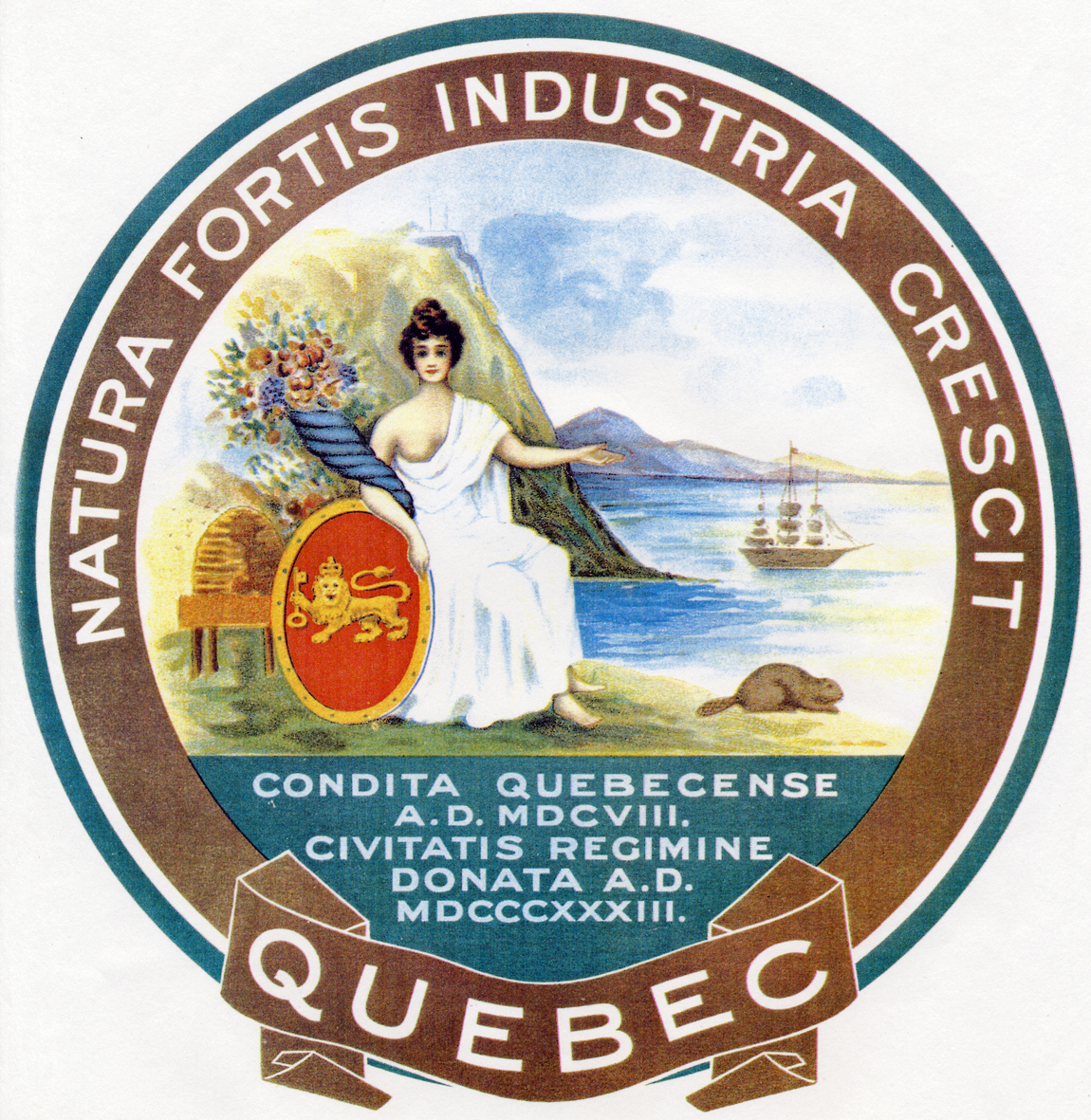
After its formal adoption on May 23, 1834, the new seal of Québec City is introduced to authenticate official ordinances, regulations and resolutions. At the same time, the seal is adopted as the city’s emblem and adorns various administrative documents.
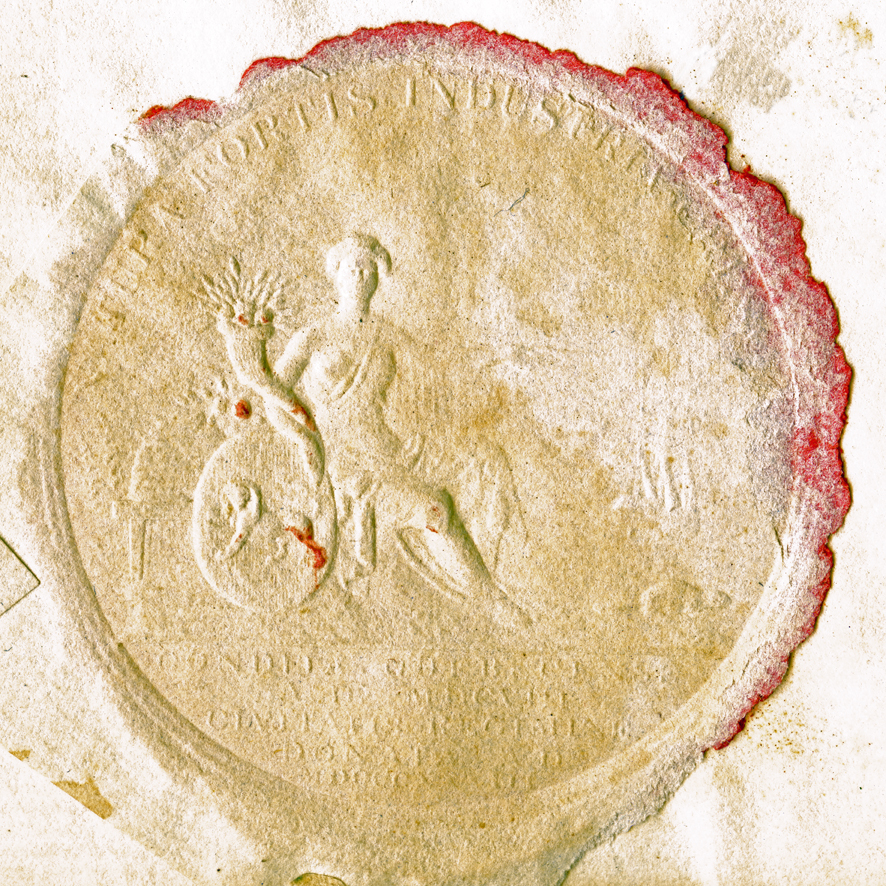
John Henry Walker, engraver of Irish origin, prolific illustrator of political magazines, Québec monuments, emblems of associations, Masonic groups and public organizations, picks up the seal’s visuals in the last third of the 19th century. It appears on Québec City documents dating from between 1884 and 1919.
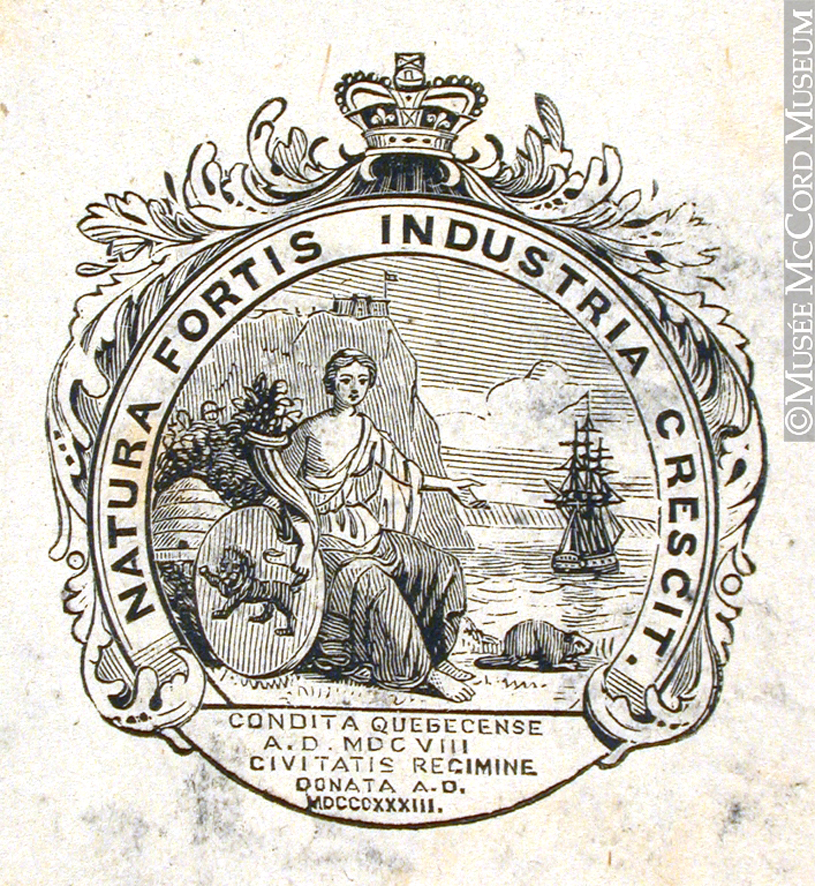
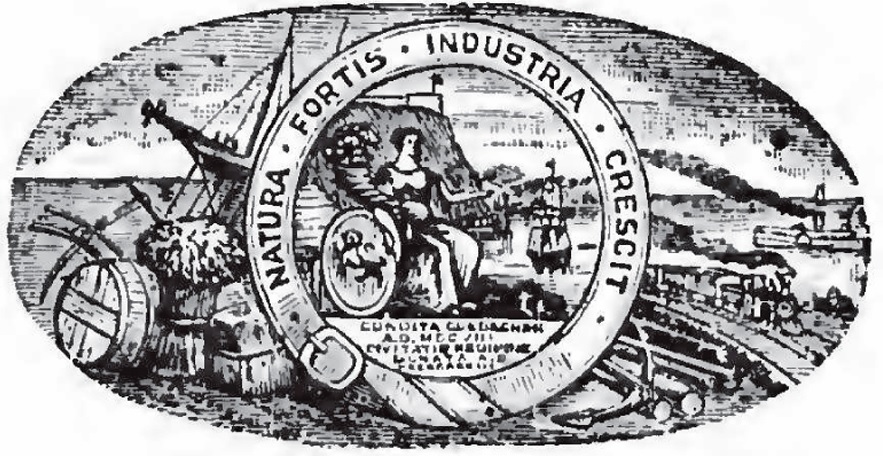
Used as an emblem, or even as a coat of arms on the city’s documents, this illustration was also replicated on various objects. We saw it appear on coins from the Québec Bank, banknotes from the National Bank as well as on medals. In 1908, the Québec Tercentenary proves an excellent opportunity to highlight this wonderful image, not only on medals and official badges, but also on souvenir items like brooches, plates and spoons. In one form or another, these visuals will remain in use until 1949.
Nowadays, we can still find them in various locations, namely at the Parliament Building, overhanging the statue of Samuel de Champlain. Since 1961, the Numismatic Society of Québec uses and replicates them on medals, tokens, notes and other documents.
Current Emblems
Soon after World War II, Québec City feels the need to modernize its emblems. The necessity of having new arms arises when the new municipal administrators decide to engrave the city’s coat of arms on a wall of the pumping plant on St. André Street. The complexity of the 1833 seal does not meet the modern values anymore! In October 1946, Mayor Lucien Borne and the Québec City council decide to establish a coat of arms design committee.
Chaired by Édouard Flamel, Québec City’s chief engineer, the committee includes Valère Desjardins, archivist statistician, acting as secretary. The collaboration of Maurice Brodeur, heraldist, is solicited on December 18, 1947. The committee then calls upon consultants Gérard Morisset, member of the Royal Society of Canada, and Marius Plamondon, sculpture professor at the École des beaux-arts de Québec, heralds of the Canadian Heraldic Authority.
After more than one and a half year of research, new visuals are designed. Painter Gordon Macpherson draws the motif while Judith Bainbridge performs the calligraphy work. The city council adopts the new coat of arms in 1949. It is the first coat of arms to be registered by the Canadian Heraldic Authority on September 20, 1988.
On that day, Québec City is officially given its coat of arms and flag, which are still in use today. The announcement of the letters patent is made on November 26, 1988, in The Canada Gazette, volume 122, page 4626.
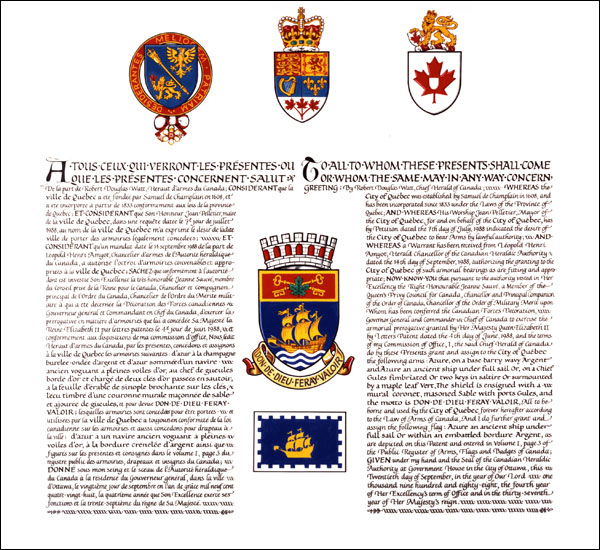
The new coat of arms is described as such: “Azure on a base barry-wavy Argent and Azure an ancient ship under full sail Or, on a Chief Gules fimbriated Or two keys in saltire Or surmounted by a maple leaf Vert.” The shield is ensigned with a mural coronet, masoned Sable with ports Gules.
The official motto of the city is DON DE DIEU FERAY VALOIR. It captures both the name of Samuel de Champlain’s vessel and the expression of the courage and determination of the Québécois people.
With regards to the flag, it bears the following motif: “A golden vessel with billowing sails on an azure background with a crenellated silver border.”

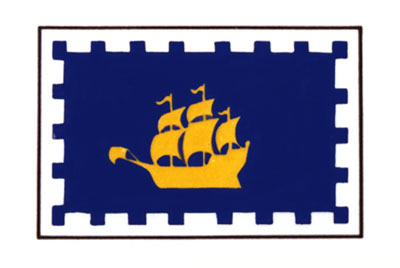
Rich in Symbolism
The official emblems of Québec City bear various heraldic symbols, rich in meaning.
- The ship alludes to the maritime history of Québec City from Jacques Cartier, discover, to Samuel de Champlain, who founded the city in 1608. It also honours the maritime tradition of the city which, by the middle of the 19th century, was one of the most important shipbuilding sites in the world. The billowing sails evoke the determination and courage of the people.
- The keys are reminders of the political and municipal history of Québec City. The right key symbolizes Québec City, capital of New France, of Canada at the beginning of the English regime, and of Lower Canada. The left key represents the capital of the Province of Québec since Confederation.
- The maple leaf is a symbol of the city’s cultural diversity and Canadian personality.
- The burry-wavy represents the St. Lawrence River.
- Finally, the mural coronet and crenellated border refer to Québec City being a fortified city, just like Samuel de Champlain’s home city: Brouage, in Saintonge, France.
The colours used in these official symbols bear great heraldic importance:
- Or is a symbol of strength, faith, justice, wealth, consistency and brightness;
- Argent symbolizes humility, purity, charity, truth and victory;
- Azure (blue) represents sovereignty, majesty, serenity, high reputation, knowledge, clarity and loyalty;
- Gules (red) alludes to love, pain, grandeur, courage, generosity, valour and intrepidity;
- Vert (green) represents hope, renewal, abundance, beauty, liberty and cheer.
Thanks to this precious historical, patrimonial and heraldic information, you will be able to look at the official emblems of Québec City with the eye of a connoisseur.